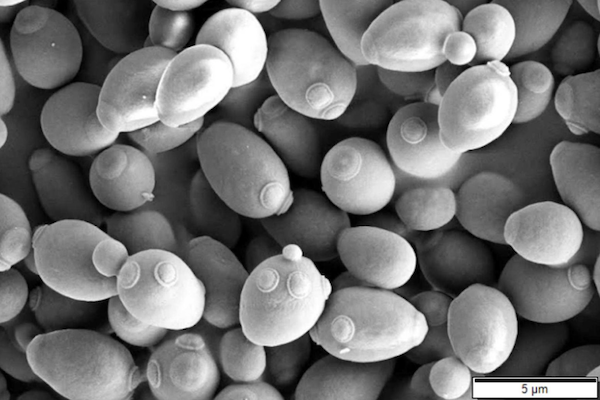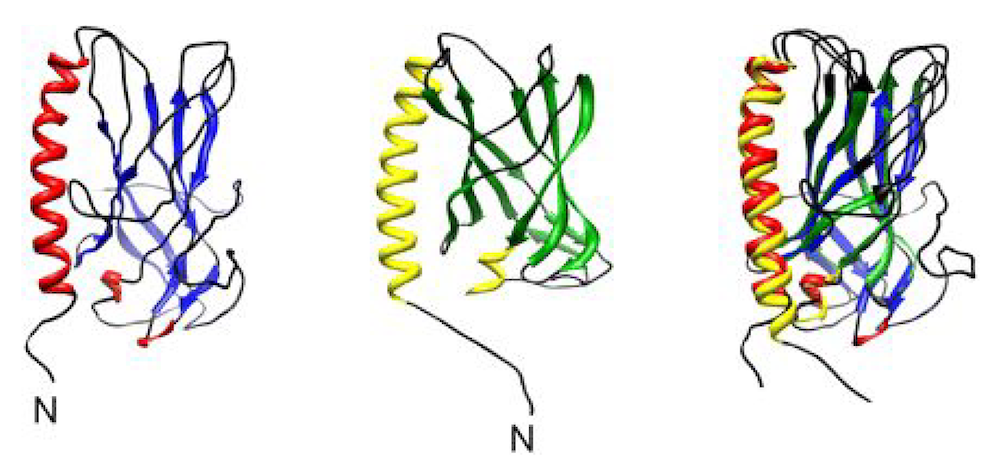Of Beer and Biochemistry
04 September 2019

Above: microscope image of a yeast cell at 400X magnification.
By Payton DeMarzo
Could beer be the cure for cancer? Of course not, but it has an interesting way of helping us study disease! Humans have used Saccharomyces cerevisiae for baking and brewing since ancient times, and now we are using it to study cellular processes.
It may not seem like we have a lot in common with yeast, but there are actually a large number of conserved biochemical pathways between humans and S. cerevisiae. These pathways include cell growth, division, stress-response, and quality control pathways.
Since most of these pathways are extremely complex, it helps us to study them in a simplified organism first. Luckily, proteins in yeast have near-identical copies in humans, called homologs (see below).

Above: Structural prediction of NDR1 based off homology to similar proteins (left), Solved structure of NDR1 (center), Overlay demonstrating that the proteins look nearly identical, affirming the use of homology in protein predictions (right)
Homologous proteins are similar in sequence and structure and can, therefore, allow us to assume they are similar in function as well. If you wanted to study a human protein of interest, imagine how much more efficient it would be to study its homolog in an organism that needs little maintenance and doubles every 90 minutes! These factors have led to yeast being used as a model organism to understand both cancers and neurodegenerative disorders and apply them to the human body.
So next time you crack open a cold one or bite into a fresh-baked slice of bread, remember how much good these microscopic organisms are doing on a macroscopic scale for scientists everywhere!

